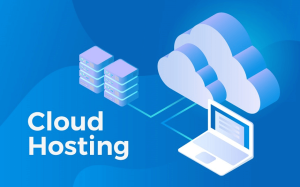Benefits of Customer Success Management

Customer Success is when your customers achieve their Desired Outcome through their interactions with your company. We define Customer Success Management as the process of moving customers toward their ever-evolving Desired Outcome.
Now to ensure your customers achieve their Desired Outcome or, what they need to make, the way they need to complete it and not just hope it happens, you need to work your customers toward that goal actively.
That is when Customer Success Management comes in.
Customer Success Management is the process of moving customers toward their ever-evolving Desired Outcome.
And Customer Success Management is made up of the following things:
#1. Segmentation:
Logical Customer Segmentation is at the core of a sound – and scalable – Customer Success Management strategy.
Segmenting customers based on how much they pay us (ARR, LTV, ACV, etc.) is one of those traps that a lot of Customer Success organizations fall in place.
It seems logical (from your perspective, at least), plus it’s what the industry has been doing for a long time (it’s a holdover from traditional Account Management).
Just because that’s how it’s been done doesn’t mean its right!
Each customer segment has its own appropriate experience even if they share the same required outcome, so if we understand what their appropriate experience is, we’ll know the type and level of coverage (humans – required skills, characteristics, etc. – plus technology) to get them there.
Segmenting your customers based on Appropriate Experience is the only way to both give the customer exactly what they need and the coverage levels to do that.
#2. Orchestration:
One of the simplest – and yet amazingly effective – things you can do to ensure your customers aren’t just on the path toward success but to know what to expect along the way is what I call Orchestration.
Orchestration is made up of three main elements:
- Properly Manage Expectations
- Layout Joint Accountabilities
- Tee-up future Expansion and Advocacy
Managing Expectations with your customers by telling them what to expect in the first 30, 60, 90-days as a customer and what the major Success Milestones are along the way are some straightforward ways to reduce any anxiety they might have and to build trust in you.
Giving the customer a list of things they need to do – both in the product and outside of it, on their own – and what you need to do – and showing that if both parties hold up their end (that’s why I call it Joint Accountabilities), they’ll reach their goal. But if they fail to do what they need to – and said they would do, then they won’t reach their goal. Of course, you have to do what you say you’ll do, too, and if both parties complete their Joint Accountabilities, the customer should reach their goal.
Finally, letting the customer know that you rely on word of mouth (maybe you say to keep costs down, so you stay cheap; don’t say this if you’re the high-priced option!) and that once they hit a particular Success Milestone, you’ll ask them to give you a testimonial or do a case study.
Or that when they hit a different Success Milestone, you’ll “let them know about this add-on that other companies like theirs always buy… but you don’t need that right now.”
Then you can start orchestrating Customer Success – manage expectations, define joint accountabilities, and tee-up expansion and advocacy – right now, a very low-cost thing.
#3. Intervention:
To operate Customer Success Management, you must proactively intervene appropriately for that customer segment (a mix of technology and human touches; the “appropriate” part will dictate the ratios therein) to get them to do the things they need to do to move from one Success Milestone to the next.
If they do those things, high, they’re on their way to being successful.
If they don’t do those things, however, you need to change up or escalate intervention modalities to get them to take action.
Intervention can be done a timed basis (after x number of days, send an email or every three months do a Quarterly Business Review), based on data (the customer is not doing what they need to do to move to the next Success Milestone), or Triggers (our internal champion just changed jobs).
You’ll likely intervene based on a mix of all three of those factors, and the modalities for intervention (email, call, in-person meeting, etc.) will be determined by the Appropriate Experience of the customer (see Segmentation above).
#4. Measurement:
There are two types of measurement that must happen in a Customer Success Management organization:
How are the customers doing?
How are we doing?
If the second one (how are we doing?) is not based on the first one (how are they doing?), you’re doing it wrong.
When it comes to Customer Success, you want to pay attention to a financial metric (usually Net Revenue Retention or NRR) and a Customer Success-specific metric like Success Vector.
#5. Increased cross-selling and upselling opportunities
Cross-selling and upselling are two key strategies for increasing revenue and maximizing the value of each customer. With customer success management (CSM), businesses can identify opportunities to offer additional products or services that align with the customer’s needs and goals. This can lead to increased cross-selling and upselling opportunities and ultimately, higher revenue.
CSM teams can use customer data and insights to understand the customer’s journey and identify areas where additional products or services could add value. By developing a deep understanding of the customer’s goals, challenges, and pain points, CSM teams can suggest relevant solutions that can help the customer achieve their desired outcomes.
For example, a software company might offer a customer a more advanced version of their product that includes additional features that align with the customer’s needs. Or a financial services company might suggest an additional service that can help the customer achieve their financial goals.
#6. Increased scalability
One of the unique benefits of customer success management (CSM) is increased scalability for businesses. CSM allows businesses to build a framework for managing customer relationships and delivering proactive support that can be scaled over time.
By implementing standardized processes and leveraging technology to automate tasks and workflows, CSM teams can manage a larger number of customers more efficiently. This can help businesses achieve faster growth without sacrificing the quality of customer support or success.
For example, CSM teams can use customer data and insights to identify common issues or questions that customers have, and then develop self-service resources, such as a knowledge base or community forum, to help customers find answers on their own.
This can reduce the volume of support requests that require human intervention, freeing up CSM teams to focus on more complex issues or high-touch interactions with customers.
#7. Improved customer advocacy
Customer advocacy refers to the practice of turning satisfied customers into brand advocates who promote a business through word-of-mouth marketing and other means.
Customer success management (CSM) can play a key role in improving customer advocacy by providing a positive experience and exceptional support that inspires customers to become loyal advocates.
CSM teams focus on understanding the needs and goals of each customer and proactively working to ensure their success.
By providing personalized and proactive support, CSM can help build stronger relationships with customers, leading to greater loyalty and retention.
Happy and successful customers are more likely to recommend a business to their friends, family, and colleagues.
By providing exceptional support and fostering a culture of customer success, businesses can turn satisfied customers into powerful advocates who promote their brand to others.
Recommended Reading:
- Building Lasting Relationships with Your Customers
- Tips to Grow Your Customer Loyalty Program
- 12 Simple Rules To Follow For Your First 100 Customers
- Importance of Customers in a Business
- Designing a New Product Your Customers Will Love
#8. Improved employee satisfaction
Customer success management (CSM) can be a game-changer for businesses looking to improve their customer relationships and build a strong reputation in their industry. However, the benefits of CSM go beyond just better customer satisfaction and retention rates.
One of the unique benefits of CSM is improved employee satisfaction, which can lead to greater productivity, higher retention rates, and a more positive work culture.
CSM provides employees with a sense of purpose and meaningful work by focusing on ensuring the success of customers and helping them achieve their goals. This can be highly rewarding for employees who are passionate about making a difference in the lives of others.
As CSM teams work closely with customers and proactively address their needs, they develop strong relationships with customers, which can lead to a sense of pride and accomplishment in their work. This, in turn, can strengthen their connection to the mission and values of the business.
Conclusion:
It doesn’t matter if we’re hitting our retention or expansion goals if we’re doing it in a way that’s not aligned with our customer’s success that new (or renewed) revenue won’t stick around.
If you meet your NRR goals for the time period, but your Success Vector is getting worse, that could mean you did things to meet the financial KPIs in a way that had a negative impact on the customer.






